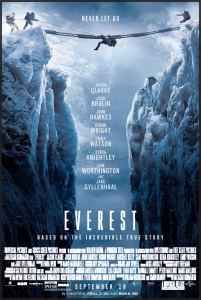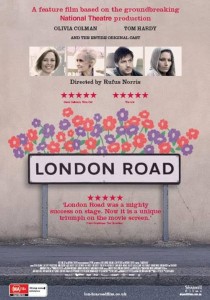Everest is based on best-selling book Into Thin Air by Jon Krakauer, a member of the 1996 expedition, a character in the film and one of the few survivors of the fateful climb. The book’s adaptation by screenwriters William Nicholson and Simon Beaufoy would have been better off avoiding the introductions of semi-invested backstories for the ensemble of characters.
Context enhances a story, but not when you reduce the lives of the real life climbers to feel as though they are clichés designed to pull at our heartstrings. Even when one character is talking via satellite phone to her dying husband the moment feels embellished but is in fact tragically accurate.
Perhaps the only character that feels fully developed is Rob Hall (Jason Clarke), head of Adventure Consultants, an outfit that sought to get amateur climbers to the top of the mountain in the early 90s. Hall’s team in 1996 consisted of guide Guy Cotter (Sam Worthington), mailman Doug Hansen (John Hawkes), Texan Beck Weathers (Josh Brolin), Jon Krakauer (Michael Kelly) and the only woman on the climb, Yasuko Namba (Naoko Mori).
Scott Fischer’s (Jake Gyllenhaal) company Mountain Madness plays contrast to the methods and standards of Hall’s Adventure Consultants. Fischer ends up cooperating with Hall and becoming a co-climber in a bid to get their respective clients to the top safely. All these characters are loosely bound together and make a believable and appealing climbing team, maintaining viewer interest in the events that are to unfold.
Thankfully, Everest does contain one crucial redeeming quality: the mountain itself. Director Baltasar Kormakur, along with cinematographer Salvatore Totino, actually managed to get some of the film shot at the Everest base camp resulting in some impressive cinematography. They are able to capture the vertigo-inducing peaks and the harsh realities the climbers face when scaling the mountain. It’s from this atmosphere that the film is most satisfying, giving Everest the intense peril and excitement it needs.
Visuals aside, this film does have more going for it than say, Vertical Limit, a film recognised for its preoccupation with action, rather than having a practical approach to a mountain climbing film. However, the element of Everest that is perhaps most crucial is the fact that it is based on a true story, a title often brandished at the beginning of a film as a half-hearted attempt to immediately engage and interest an audience. Everest could have easily benefited from balancing both the drama and real life stories of the disaster that occurred on the 1996 climb.
Touching the Void is a prime example of this balance. It combined both documentary and dramatic techniques to tell the tale of two climbers who attempted to reach the summit of Siula Grande in Peru. Everest doesn’t have to be a documentary to remind us that this is a true story, but it does need to feel like one.
Possibly the biggest disappointment of the film is that the Sherpas in Everest predictably don’t get much screen time or recognition. This is disappointing since an in-depth documentary, Sherpa, screened at Melbourne International Film Festival earlier in the year. This documentary displayed the unappreciated dedication of the Sherpas to get foreigners to the top of the mountain, and looks at a drastic reappraisal of their role in the Everest climbing industry. This may seem beside the point of Everest, but when a film chooses to use real Sherpas over actors and then not utilise them, it’s shooting itself in the foot with a dummy cartridge. It’s done everything right up to a point.
If a thrilling adventure is what you’re after then Everest is for you. However, you may leave feeling a little odd, as though the film deserved a little more than it got.
Everest is in cinemas from 17th September through Universal.





